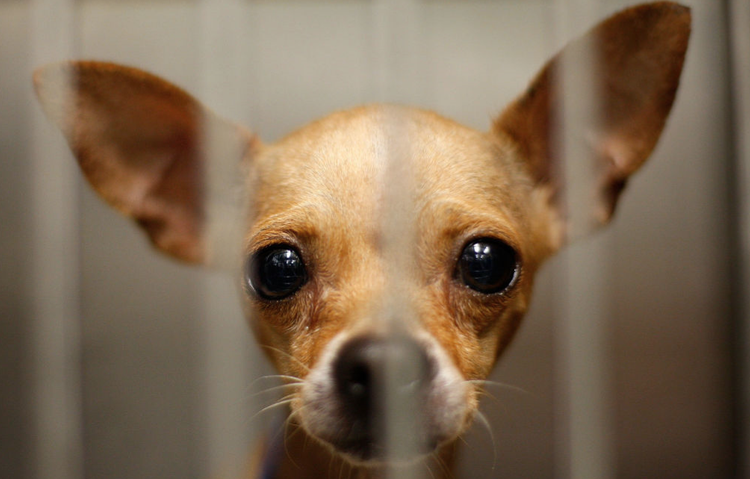NC BUDGET ADVOCATES-The first article in this series, published on March 28, 2019, discussed the role of the Los Angeles Animal Services Department (LAAS) and the status of its No-Kill goal for dogs in the City animal shelters.
The second article, published on April 1, 2019, dealt with the No-Kill goal for cats and the role of the Budget Advocates in the City budget process. The current article will discuss the specific budget proposals made by the Budget Advocates to achieve and maintain No-Kill. The next article will discuss the proposals to increase volunteer support for the animal shelters and to provide adequate staffing for LAAS.
For the current fiscal year 2018-19, the LAAS appropriated budget is approximately $24.5 million, out of a total City budget of $9.8 billion. This is approximately one quarter of one percent of the total City budget. LAAS’ share of unrestricted revenue is $38.2 million, which is eight tenths of a percent of unrestricted revenue available to City departments. LAAS’s share of appropriated funds and unrestricted revenue is less than half of a percent of money available to City departments, to provide protection and care of all animals in the City, including operation of the six City animal shelters.
The Mayor and the City Council have made the achievement and maintenance of No-Kill a high priority for the City. No healthy adoptable animals should ever be killed in our City shelters for lack of kennel space. In order to achieve that goal, and provide humane treatment for the animals in the City shelters, the LAAS budget should be modestly increased to include the following:
- Funding of Spay/Neuter. Funding spay/neuter of dogs, cats, and rabbits is key to achieving and maintaining No-Kill in the City shelters. Spay/neuter also saves the City a great deal of money in the long run. It is much less expensive to spay/neuter dogs, cats, and rabbits than it is to care for generations of their offspring at the City shelters and ultimately have to kill them when the shelters run out of space.
Prior to 2015, $1.1 million was transferred annually from the City’s General Fund to the Animal Sterilization Fund. This amount was decreased to $500,000 in 2015-16, and then eliminated entirely in 2016-17 and 2017-18. The Animal Sterilization Fund was about to run out of money, which would have eliminated spay/neuter services for low-income pet owners, until the City Council provided $850,000 to the fund in May 2018.
The full annual transfer of $1.1 million (approximately one ten thousandths of the City budget) from the General Fund to the Animal Sterilization Fund should be reinstated. To make up for years in which there was no funding or reduced funding of the Animal Sterilization Fund, additional funds may be necessary this year.
After many years in which thousands of animals were killed in our City shelters for lack of space, the City has finally reached No-Kill for dogs. This was achieved in large part because of the $1.1 million funding of the Animal Sterilization Fund in past years. If that funding is stopped, spay/neuters will decrease, and in a few years, the shelters will once again be killing dogs for lack of space.
Los Angeles has not yet achieved No-Kill for cats. Overturning the TNR (Trap Neuter Return) Injunction and adequate funding for spay/neuter of cats is key to achieving and maintaining No-Kill.
- Fourth of July No-Kill Fund. Around the 4th of July (approximately June-August) each year, the City shelters become overcrowded with dogs. Dogs are very fearful of fireworks and many run away when they hear them. Many of these runaway dogs end up in the City Shelters. Though most of these dogs are reunited with their owners within several weeks, overcrowding in shelters, even temporarily, may cause other dogs to be put down due to lack of space. (See the photo of Cleo, who was killed for lack of space in the summer of 2015.
The Budget Advocates propose a yearly appropriation of $250,000 (around one forty thousandths of the City Budget) to prevent the unnecessary killing of dogs for lack of space during the July 4th season. This fund would be used to support fosters and other programs so that dogs would not have to be killed to make space for the influx of dogs around this time each year. Any surplus funds could also be used for kitten and cat fosters when there is overcrowding during other times of the year. This fund could also be used to support the influx of dogs and cats during emergencies, such as during the recent fires.
- Life Saving Liaisons. Over the past year, each of the six City shelters has designated an Animal Care Technician (ACT) to serve as the Life Saving Liaison for that Shelter. These Life Saving Liaisons work to increase placements with private rescue organizations, increase fosters, and ultimately increase adoptions. These positions are essential to achieving and maintaining No-Kill and should be made permanent, full-time positions. There is a shortage of ACTs at all of the shelters – patrons often have to wait to adopt animals, the front desk is unmanned because ACTs are doing other tasks, and there is other work that volunteers are not permitted to perform that goes undone because there are not enough ACTs at the shelters. Six new ACTs should be hired, one for each shelter, to replace the ACTs who have become the Life Saving Liaisons. Two full-time clerical assistants should also be hired to assist the six Life Saving Liaisons with social media outreach for the animals and other tasks.
Jeffrey Mausner (see www.mausnerlaw.com) is a Neighborhood Council Budget Advocate, 2nd Vice President of the Tarzana Neighborhood Council and Chair of its Animal Welfare Committee, Neighborhood Councils Liaison to the L.A. Animal Services Department, and a Volunteer at the West Valley Animal Shelter. He is a retired attorney and law school professor and was formerly a Federal Prosecutor for the U.S. Justice Department.











